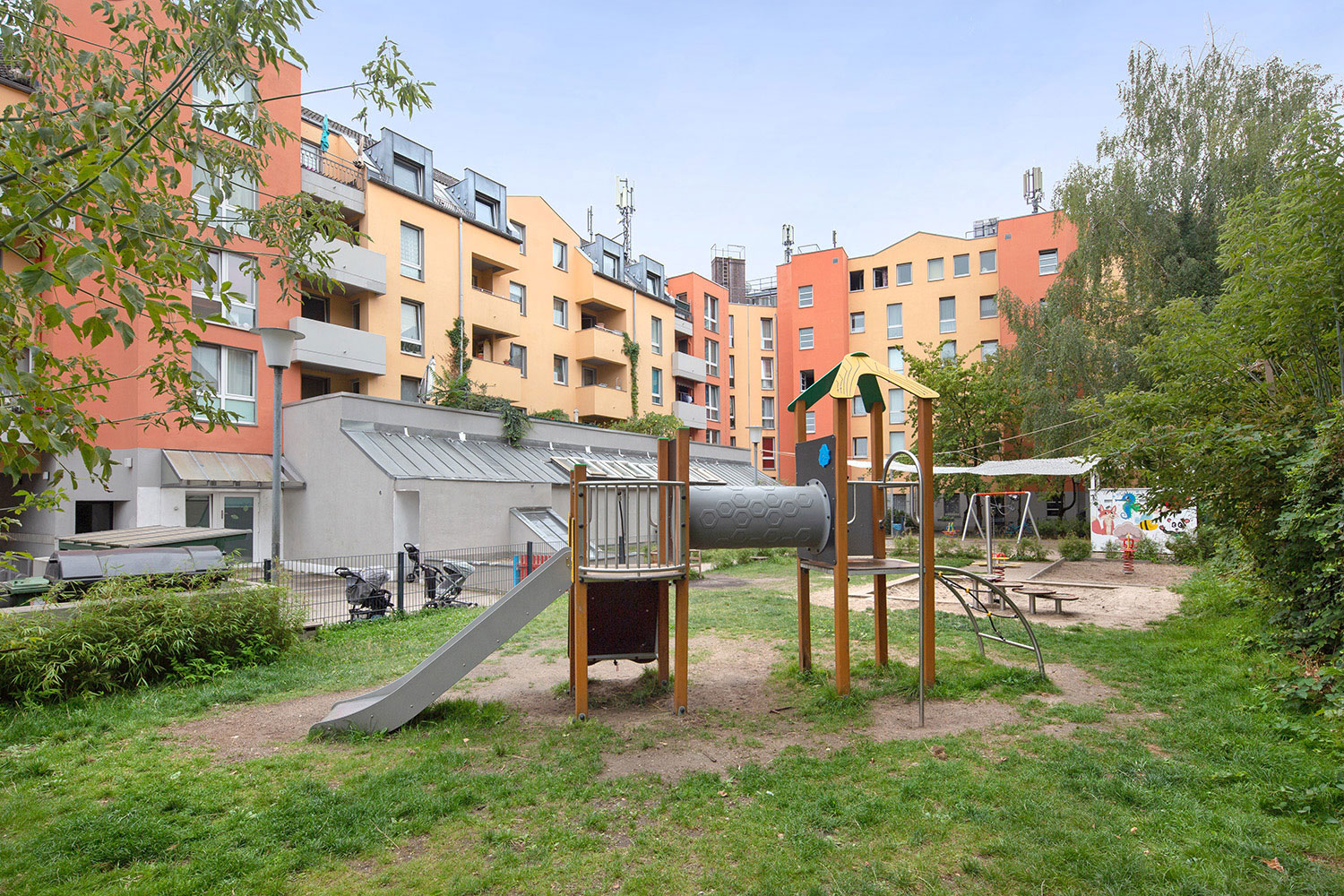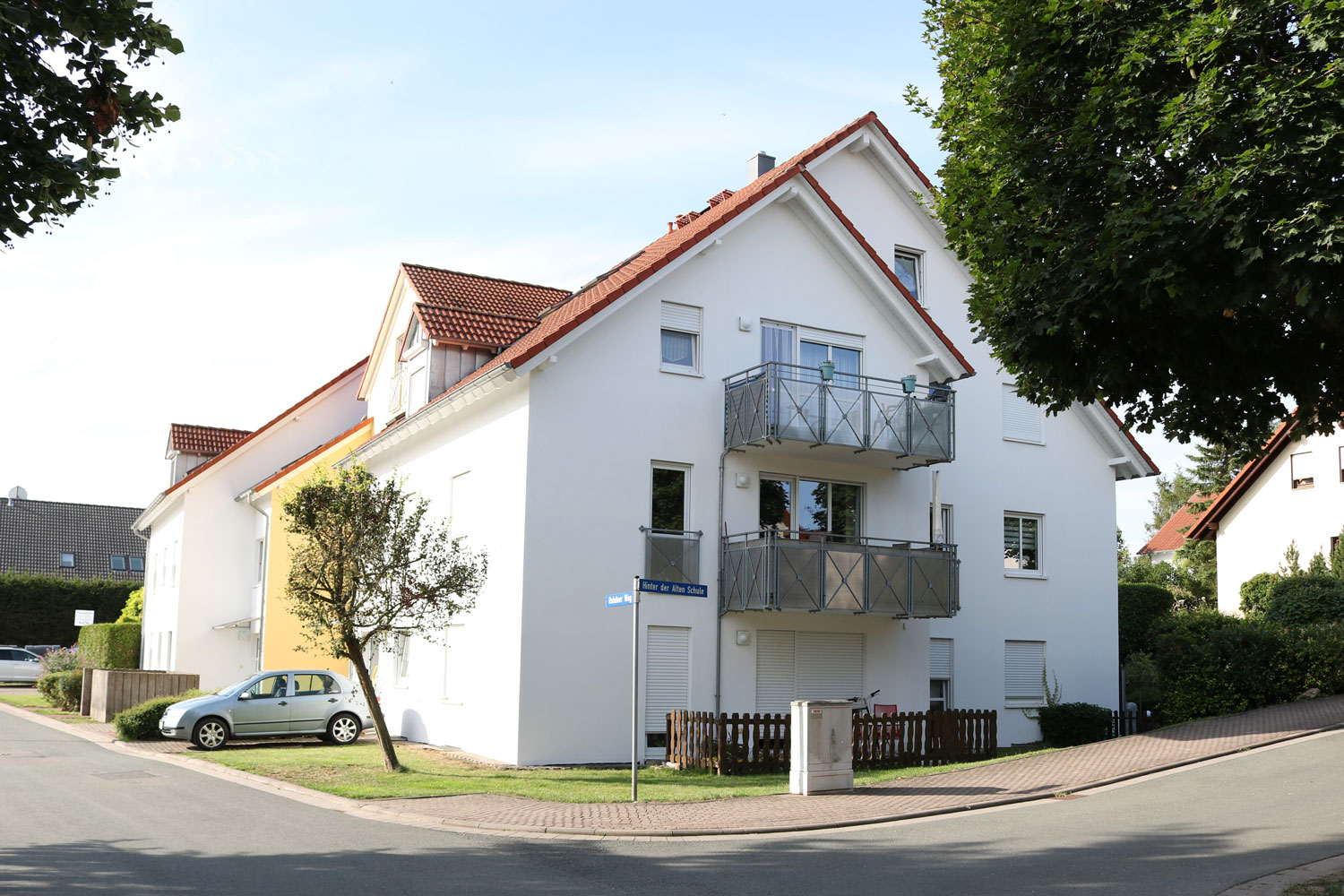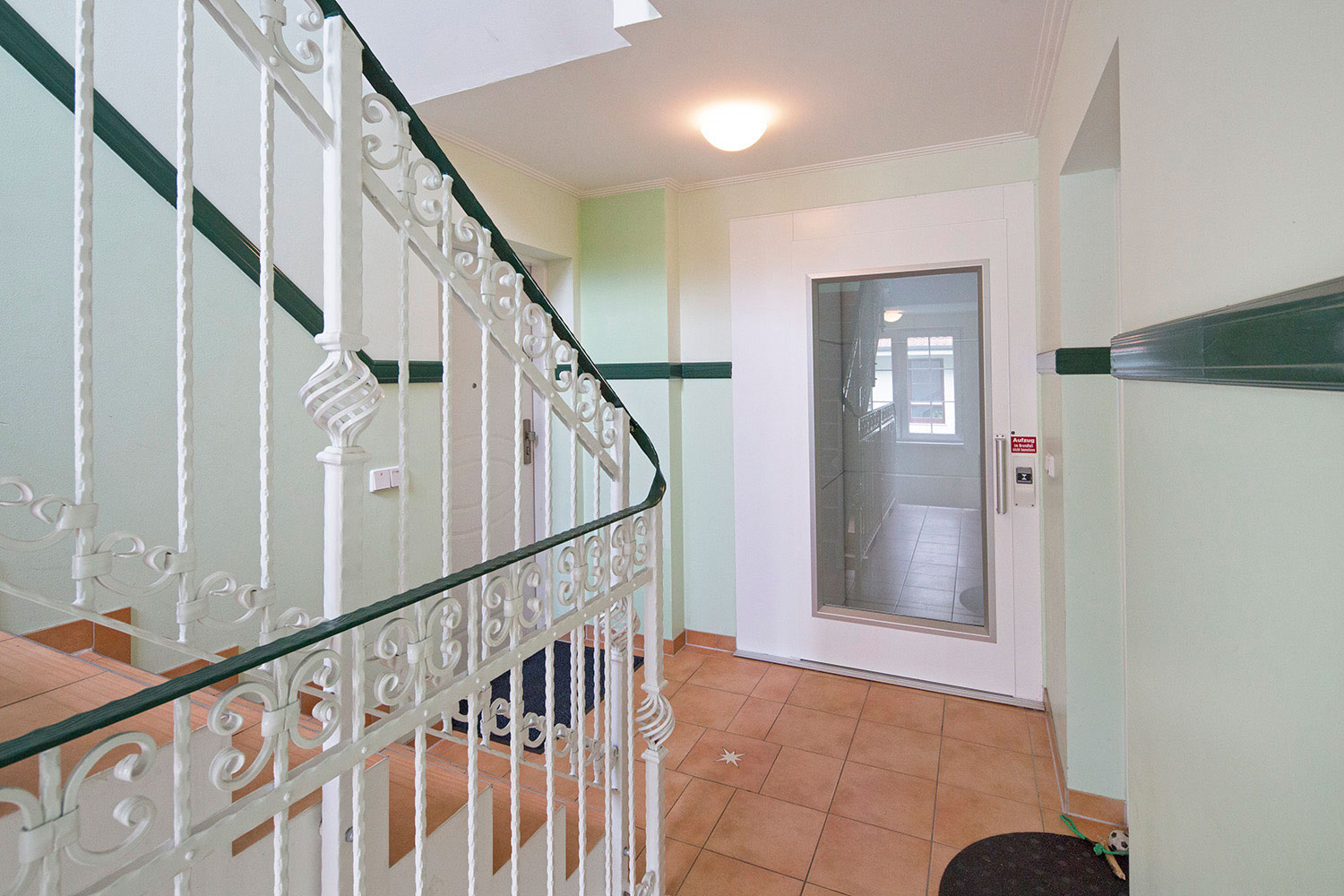Residential Investments in Germany – including Berlin Residential Investment Market – March 2020
3. Mar 2020

3. Mar 2020

Dear Reader,
“And I thought socialism was history” were the words of a U.S. investor upon hearing about the Berlin rent cap and the regulatory frenzy on Germany’s real estate markets. And it’s true: anyone who is currently considering investments in the German housing market needs to do their homework and get to grips with the many (some would say too many) barriers and restrictions – with the ban on converting rental apartments into condominiums just one example. It is important to focus on long-term value add and not to take the path of least resistance, i.e. limiting investments to markets with favourable political, explains Jürgen Schorn of Bauwerk Capital. And buyers would be well advised to follow the advice of Gabriel Khodzitski, CEO of PREA, who recommends making greater use of alternative data to evaluate investment decisions. And Mark Heydenreich from Fortis explains how new and old buildings can be equally sustainable, both from an energy and economic point of view. In the midst of all this, one thing is certain – there is plenty to do and keep abreast of on the real estate markets in 2020.
Here’s to an informative read!
Jürgen Michael Schick and Dr. Josef Girshovich

Gabriel Khodzitski | CEO of PREA
Too many real estate industry professionals are astonishingly stubborn when it comes to which underlying data they use to make their business decisions. For years, they have been relying on an asset’s long-term WAULT (Weighted Average Unexpired Lease Term) to provide an indication of its long-term stability. And they have long calculated a property’s achievable rental income by analysing a range of investment comparables – such as the prices that have most recently been achieved for other assets in the same market.
Now, however, we need to ask ourselves how up-to-date our data collection approaches are in today’s market – and whether our industry would not be better advised to wean itself off its beloved data habits. After all, many of the classic property-related facts and figures we use are highly imprecise. Firstly, these data have almost nothing to do with the specific and unique value propositions of an individual property. Secondly, the data merely reflect information from the past – and rarely make it possible to draw conclusions about the potentials and risks that could be exploited in the future. Thirdly and finally, the industry is unable to unlock new potentials and exploit emerging opportunities if it sticks too rigidly to its tried and trusted approaches. Without changing our ways, we fail to collect the kind of alternative data we need to reliably zero in on the risks and opportunities that will shape our industry’s future.
For the long-term development of a property, it makes far more sense to analyse selected social and economic data than it does to create an Excel table of residual lease terms. How are the job markets, purchasing power indexes and crime statistics developing? How much potential does the relocation of industry-leading companies offer? What transport infrastructure improvements are planned over the next few years and where? With this type of information, real estate companies can develop forward-looking strategies to build and upgrade properties to satisfy users’ wants and needs five or ten years down the line.
The same applies to the local and regional politics of building permits. It is by no means a rare occurrence that even supposedly robust building permits are subject to critical review long after planning authorities have granted their approval. Increasingly, activists are launching political initiatives which, if successful, can quickly ensure that a ready-for-construction project is overturned. Data on citizens’ associations and grassroots campaigns, along with local, regional and national election timetables – which could provide advance warning of potential shifts in municipal interests – are therefore essential. All of this alternative data is freely available, but is rarely used in the pricing and evaluation of a potential real estate investment.
Even more potential – much of which remains untapped – is waiting to be discovered in the world of Smart Data. Intelligent algorithms and machine-learning technologies can already make forecasts with far greater precision than traditional calculation methods. However, the full range of possibilities these applications offer can only be exploited when we optimise both our processes and the data on which we base our calculations. After all, even cutting-edge Artificial Intelligence can only do so much with traditional data that only tells half the story.
What is the most sustainable real estate investment: new construction or existing buildings?

Mark Heydenreich | Managing Director of FORTIS Real Estate Investment AG
A growing number of investors and owner-occupiers are currently asking themselves whether the housing market boom of recent years is about to come to an end any time soon. On the one hand, the massive price rises for residential real estate in Germany’s largest cities and metropolitan areas have created a major issue for both politicians and society at large – and led to ever more stringent regulation of the country’s housing stock. On the other hand, it is not clear whether prices for new buildings have now reached a “glass ceiling”. After all, no matter how expensive building land and construction costs become, some market observers believe that we will eventually hit a ceiling, even in the best locations. There is, after all, a point at which a square meter of living space simply becomes unaffordable.
In this debate, I am interested in the fundamental question of how high this “magic” limit is and who decides: is €7,000 per square metre in a newly constructed apartment building still realistic and €8,000 now too high? Is €12,000 per square metre asking too much, or is it still possible to ask for €14,000? The market for new residential construction rests on two pillars: firstly, on investors’ assumptions that they can achieve a certain level of rental income from a specific asset; and, secondly, on the willingness of buyers to pay a certain absolute price for a new home. It is probably unnecessary to add that both are dependent on a third factor – namely the ability of potential buyers and potential tenants to service their mortgages and rents. I have come to believe the following: Provided there is scope for buyers and tenants to make increased mortgage and rent payments, housing prices will continue to rise, even beyond any supposed and arbitrary glass ceiling.
In the United States, the real estate platform PropertyShark publishes an annual ZIP code ranking of the most expensive properties in the country. The ranking is based on an analysis of which postcode areas have the highest average asking prices. It’s well worth noting the following trend: In past rankings, the most expensive ZIP codes were in Long Island (just outside New York City) and Connecticut; over the last three years, it has been cities and communities in Silicon Valley that have been breaking all records. This trend is not only relevant in terms of the potentials for price increases and general demand for residential real estate, it is also of interest in a sector-specific context. Connecticut and Long Island are the ancestral homes of New York investment bankers – America’s highest earners in recent decades. So, what has changed? Well, the banking industry no longer pays the highest salaries – it has been overtaken by the internet and tech industries. As incomes rise, people are willing and able to spend more on housing, a fact that is clearly confirmed by PropertyShark’s ZIP code ranking. More than 90 of the 100 most expensive ZIP codes in the United States are now in California.
As Generation Y approaches middle age, one of the most environmentally conscious generations of all time has entered the real estate market. So, it comes as no surprise that a given property’s environmental footprint is near the front of potential buyers’ minds as they weigh up whether to buy a condominium or not. After all, energy-efficient buildings make a valuable contribution to protecting the environment.
If the primary measure of a building’s energy-efficiency is its energy consumption during operation, new construction seems to be the more ecological option compared to an older building. However, such an approach neglects the most important part of the climate calculation. After all, an older building does not have to be rebuilt at great expense in terms of energy and resources: it doesn’t need tons of materials to be shipped halfway around the world; it doesn’t need cranes and excavators that pollute the air. The most sustainable approach, therefore, is to preserve existing buildings and to modernise them to meet modern energy-efficiency standards. Thus, refurbished older buildings are often more climate-friendly than many recently constructed new-builds.
Leveraging the potentials of modernisation
Of course, many older buildings do not even come close to modern energy-efficiency standards. Thankfully, there are numerous measures that can be implemented to leverage the full potentials of building modernisations and elevate a charming, Wilhelminian-style stucco palace to the height of energy efficiency. First of all, any measures need to address the building’s heating systems. After all, district heating and gas are far more efficient than oil heating systems. Another relevant factor in terms of heating is that the installation and replacement of existing systems will also be heavily regulated from 2026 as the German government strives to achieve its climate protection objectives. Improving the insulation around supply and waste water pipes is another good way to protect the environment. Façades and attic spaces are also important elements of any older building. With the right insulation, a massive amount of energy can be saved – and the charm of the building’s historic envelope remains intact.
However, owners of condominiums in older apartment buildings should seriously consider whether they want to renovate and modernise their apartments themselves, or whether it makes more sense to move into an older apartment that has already been modernised to the highest energy-efficiency standards. After all, owners who want to do modernise their apartments themselves don’t have the final say on which measures they implement, they first have to reach agreement with the other members of their HOA. But even in such cases, environmentally conscious apartment owners have a number of options for achieving a greater degree of sustainability on their own. One of the most important levers is water consumption. Where water-saving aerators are installed in the single-lever mixers in the shower and washbasin, water consumption can be cut by about half. The right shower heads also provide the same showering experience, but with just a third of the water consumption. And of course, new toilets with efficient cisterns are far more economical than older ones.
Limited supply, stable prices
However, sustainability is not only a question of reducing energy consumption. In terms of real estate, sustainable also refers to properties that retain their value over the long term. Or even gain in value. More people than ever before aspire to live in older buildings, but the supply is extremely limited. And if these sought-after properties are located in popular neighbourhoods, prices will most likely remain stable, even if the economy falters. According to a study published by the brokerage firm Homeday, for example, prices for older buildings have risen by an average of around 30% over the past three years. This is a full five percentage points higher than the average price rises for all other properties in Germany’s 80 largest cities. As these figures prove, environmentally-friendly investments in older buildings can be highly lucrative, especially for buyers who want to sell their condominiums at some point in the future.
Be more courageous!

Jürgen Schorn | Managing Partner of Bauwerk Capital GmbH & Co. KG
Germans enjoy living in style and comfort – and in large apartments. And, in the minds of most Germans, it is difficult to have one without the other: the average floor area per person in Germany is roughly 50 square metres, significantly higher than in neighbouring countries such as Poland, France or Austria. At the same time, the gap between Germany and its neighbours is shrinking, especially when you take the figures for Germany’s seven largest cities. According to the Federal Statistical Office, the average floor area per person in Germany’s Big 7 shrank from 40.9 square meters in 2010 to 39.2 square metres in 2018. In view of rising housing costs and an increase in the number of single households, it is not surprising that more and more Germans are choosing to reduce their housing footprint. Gone are the days when per-capita living space seemed set to rise inexorably, even in major cities.
And in all honesty, there’s no need for the amount of floor space per person to increase year in, year out. Contrary to received wisdom, intelligent floor plans and creative furnishing solutions can achieve a high level of comfort in a small area. Nevertheless, criticism of one-room apartments has not diminished. They are deemed too small, too expensive and too elitist – and are blamed for destroying the long-established social structure of cities as they displace original populations. In my opinion, these arguments are not only wrong-headed, they are also counterproductive. The reality is that more and more people are moving to cities and this trend is set to continue for the foreseeable future. Although population forecasts are only ever reliable over relatively limited timescales, the vast majority of scenarios indicate significant growth in Germany’s largest cities over the next few decades.
Even today, developers in cities such as Munich, Hamburg and Cologne are literally treading on each other’s toes. There is simply not enough available space to absorb current population growth with conventional residential construction – especially as space is also needed for commercial developments and to create new open areas. I am certain that if the archetypal 80-square-metre, three-room apartment with two occupants remains the benchmark for politicians, planning authorities and the public, we will never solve the most pressing social and ecological problems in the housing sector. If we don’t change the way we develop new housing, our “keep calm and carry on” approach will simply exacerbate the shortage of building land. And push housing costs even higher.
According to a recent survey, a host of small- to-medium-sized towns and districts in Germany are creating living space at an incredible rate. And this new space is more than necessary, says the German Economic Institute (IW). In fact, construction activity is running at 50% above demand in 69 rural areas. In Germany’s largest cities, in contrast, building activity remains relatively subdued. Among the leading cities, Düsseldorf and Hamburg meet at least 86% of demand through new construction. If these two metropolitan areas can maintain the same level of construction over the next three years as they have over the last three years, their housing markets will quickly ease once more. Frankfurt is also doing reasonably well. In Berlin, Munich, Stuttgart and Cologne, however, the all-clear is far from being sounded. Why is that?
Not enough trust
I think many private developers have shied away from the risk of tackling supposedly “difficult” locations for too long. These can include, for example, locations a little outside city centres, socially disadvantaged neighbourhoods and even central neighbourhoods with above-average vacancies. And yet it has long been clear that these risks are well worth tackling – for developers and for communities in urban areas. The fact that too few new apartments are being built in major cities is not a recent phenomenon. For about ten years or more, it has been clear that we were at risk of a serious housing shortage. The media and industry experts starting debating a potential housing crisis a decade ago. And every month that passed with no or too little construction, the danger increased until it became an acute reality.
The usual reasons
Difficult locations? One could equally say that there has too often been a lack of vision, foresight and belief in the dynamics and growth potentials of our major urban centres, cities such as Berlin and Cologne. High land prices certainly played a greater role in Munich and Stuttgart, but even in these cities there was far too frequently a lack of courage. Against this backdrop, we should perhaps regard what can sometimes be long and drawn out planning and implementation phases of complex residential projects, which many market players have rightly criticised, as a plus. This gives the environment around your development the time it needs to evolve before your own project adds yet another building block in the process. Incidentally, we all need to be less emotional when we discuss these extended periods of time. After all, when it comes to complex projects, it is essential that the public sector and private stakeholders engage in intensive dialogue and include members of urban communities in their considerations. In our largest municipalities, almost all planning offices have been demonstrating an increased commitment and clear will to accelerate their processes, whether by increasing staff or by making exceptions in urgent cases.
Too many developers have abandoned the cities
The simple fact is that too many developers have turned their backs on Germany’s cities in favour of focusing their development activities on rural areas and growing communities beyond the outskirts of attractive metropolitan areas. Ultimately, this will result in long-term vacancies. According to IW, for example, in the northern Bavarian district of Rhön-Grabfeld, the construction of new apartments has recently outstripped demand by a ratio of 4:1. Each location is unique, as are the opportunities in each location. But the fundamentals of demographics still apply and the urbanisation trend continues unabated. Meanwhile, the problem of overall population declines has been somewhat balanced out by immigration. Fundamentally, however, the problem remains. We will continue to see small communities in structurally weak becoming increasingly abandoned – places in which it will become ever more difficult to maintain current infrastructure and property values. Places that will eventually become completely deserted.
Conclusion
We need to reduce the number of developers that have turned their backs on our urban centres. Nobody can realistically expect to create affordable living space when they buy overpriced land in top urban locations. But the cities do offer a great deal of potential in wider urban areas – through rezoning and repurposing, perhaps even by remediating contaminated land or refurbishing existing buildings. Certainly, there are developers who cannot get their plans off the ground, and their developments are coming back onto the market. The old maxim of location, location, location is just as valid today as it ever was. Let us think more in terms of the long term. Real estate is long term, so let’s build where buildings are needed in the long term.

Jürgen Michael Schick | President of the German Real Estate Association IVD
Germany’s governing coalition has announced plans to make it more difficult to convert rental apartments into condominiums. After a tidal wave of rental market regulations, many owners have been forced to convert and sell their rental apartments as condominiums. The CDU/CSU and SPD coalition now wants to put a stop to this practice at a federal level. According to the plans, even rental conversions outside designated social preservation areas (Milieuschutzgebiete) will be subject to official approval. Property owners who have gone through this process with planning offices in Munich, Hamburg or Berlin already know how difficult it is to get approval. Subjecting conversions to prior approval would, in effect, mean a nationwide ban on conversion. Municipalities know that by restricting conversions, they can claim that they are acting in the interests of tenants.
As long ago as the Housing Summit in the Federal Chancellery in September 2018, legislators indicated that they wanted to make it more difficult to convert rental apartments into condominiums. Restating its commitment to this goal, the coalition committee reaffirmed its plans last year. Right now, the Ministry of Justice and the Ministry of the Interior are in the process of drafting a final proposal with the aim of anchoring the new conversion requirements in the Federal Building Code (BauGB). As things currently stand, the new regulation will apply in certain regions. Nobody can conclusively say which regions will be affected.
In my opinion, this is the latest in a long line of populist regulatory instruments designed to create the impression that politicians are taking decisive action without any understanding of whether tenants in converted apartments are actually being squeezed out or not. There are simply no reliable figures to prove things one way or the other. Once again, it is enough to claim that tenants are being squeezed out.
Tenants already have a right of first refusal after conversion; they are protected against lease terminations for personal use for a period of between three and ten years; and planning authorities in social preservation areas can already approve conversions under the proviso that apartments are only sold to tenants for a period of seven years. Tenants in condominiums are better protected than tenants in normal rented accommodation.
From a housing policy perspective, it’s even more difficult to understand the logic behind the government’s latest plans. On the one hand, the federal government launched its controversial programme of subsidies for families with children (Baukindergeld) to promote home ownership. At the same time, this new “conversion ban” would drastically restrict the supply of housing for owner-occupiers. Prospective homeowners who want to buy their own four walls will be forced to switch to the most expensive segment in the market, namely newbuilds.
Real estate owners with portfolios outside social preservation areas should give serious thought to converting their rental apartments into condominiums as quickly as they can, before it is too late. Of course, they should also carefully consider the potential tax implications. However, if ever stricter rental market regulations (from the manipulation of official rent indexes to the proposed rent cap in Berlin) keep rental yields low, the sale of individual apartments could well be a necessary business model.
And in terms of basic policy, I think it also makes sense. After all, Germany is not a tenant nation, as we are often told, but a nation of frustrated potential owners. As the IVD has just confirmed, 50% of Germans aspire to be homeowners. Of course, this is a fact that neither tenants’ associations nor left-wing parties are willing to accept. Some would lose members, others voters, if people were simply allowed to do what they want – to buy a home free of political pitfalls and obstacles. Incidentally, when tenants are asked why they want to buy their own home, most answer: as an investment to secure my financial independence when I retire.

The expert authors of the latest Spring Real Estate Industry Report from the German Property Federation (ZIA) have identified the first signs of easing on Germany’s rental markets. The report highlights a slowdown in rental price growth and an increase in new residential construction in Berlin and a number of other cities across Germany. In the words of the report’s “Wise Men”, these trends should consolidate, provided “investors maintain their high propensity to invest and continue to find attractive investment opportunities”. The report’s authors criticise Berlin’s upcoming rent cap for being counterproductive in this respect. In contrast, they register continued purchase price rises in all of Germany’s A-cities. They also point out that demand-side pressures are building in some commercial sectors. According to the report, demand for office and logistics space is becoming increasingly difficult to satisfy and is starting to put the brakes on economic growth. The situation is particularly critical in Berlin and Munich, where the report highlights vacancy rates of 1.3% and 1.4%, respectively. As the report points out, neither city now has a healthy supply reserve. ZIA President Andreas Mattner has called for an end to “the hostile building environment” and for a moratorium on state regulation of the sector, which only serves to make the construction of new apartments more expensive.

In August 2019, the German government announced plans to reform the German Condominium Act (WEG). The aims of the reform include, for example, making it easier to install charging stations for electric cars in communal garages. The new Condominium Act is expected to come into force in late 2020. Ever since it was announced, property owners have become increasingly vocal in criticising the legislation’s failings. According to a survey conducted by the Wohnen im Eigentum consumer protection association, 94% of surveyed owners reject plans to expand the role of property managers by giving them greater freedom to make decisions and approve measures on their own authority. A vast majority of owners see any strengthening of property managers’ roles as a strict “no-go” area. And 95% of owners would like to be able to more easily terminate contracts with unqualified property managers. Wohnen im Eigentum surveyed 3,500 condominium owners and made the survey’s findings exclusively available to the major Berlin daily newspaper, Tagesspiegel. The questionnaire included 31 closed and one open question.

Representatives from the CDU/CSU and SPD, the two groups that make up Germany’s coalition government under Angela Merkel, are currently discussing changes to the future tax treatment of share deals. Positions within the Grand Coalition are still far apart. The only point on which agreement has been reached is that the new law should not apply retroactively from 1 January 2020. Legislators are aiming to pass the new law by the middle of this year so that it can come into force in early 2021. A number of major points of contention remain, including the shareholding threshold that will trigger the tax and whether the new regulations should also apply to companies with share capital or only to partnerships with real property, as has previously been the case. The Greens are calling for far-reaching reforms to Germany’s taxation system and want a quota model, which could lead to higher property prices and drive rents and costs up. Over the next few weeks, politicians will be working hard to agree solutions that reflect the findings of a recent Finance Committee hearing of real estate industry associations and experts. So far, however, the talks have failed to produce a decisive breakthrough and industry figures are becoming increasingly uncertain regarding the eventual outcome.

This very well-maintained and fully-let residential complex was built in 1982 and is accessed via four stairwells with elevators. With a total floor area of 4,012.48 sqm, the complex comprises 40 residential and two commercial units. All of the apartments have balconies or terraces and some feature private gardens.
Apartment rents are below market level, averaging €6.39 / sqm / month.
Price: €12,000,000 plus 4.76% sales commission (incl. sales tax)
Underground parking: 35 spaces
Actual net annual rent: €361,296
Information acc. to energy performance certificate: energy consumption 123.7 kWh/(m²*a), energy-efficiency class D, gas central heating, built in 1982.
(Please quote property reference number 52028 when making your enquiry)

This multifamily apartment building was built in 1997 on a 1,500-square-metre plot. The property comprises 17 apartments, which are accessible via two stairwells. The two- and three-room apartments have floor plans ranging from 52 to 80 sqm and 15 of the units are equipped with balconies or terraces.
The property also offers outside parking for 17 cars.
Price: €2,200,000 plus 7.14% sales commission (incl. sales tax)
Lettable floor space: 1,129 sqm
Price per sqm: €1,948
Information acc. to energy performance certificate: energy consumption 82.4 kWh/(m²*a), energy-efficiency class C, gas heating, built in 1997.
(Please quote property reference number 52163 when making your enquiry)

These two properties comprise a total of 19 residential units with floor plans of between 40 and 110 square metres. The newer property was constructed in 2010 and the older building was modernised in the same year. The properties feature generous balconies and terraces, modern bathrooms and fitted kitchens. Both buildings are equipped with wheelchair accessible elevators.
Price: €4,900,000 plus 5.35% sales commission (incl. sales tax)
Parking spaces: 20
Actual net rental income: €190,022
Energy performance certificates have been issued for both properties.
(Please quote property reference number 51762 when making your enquiry)